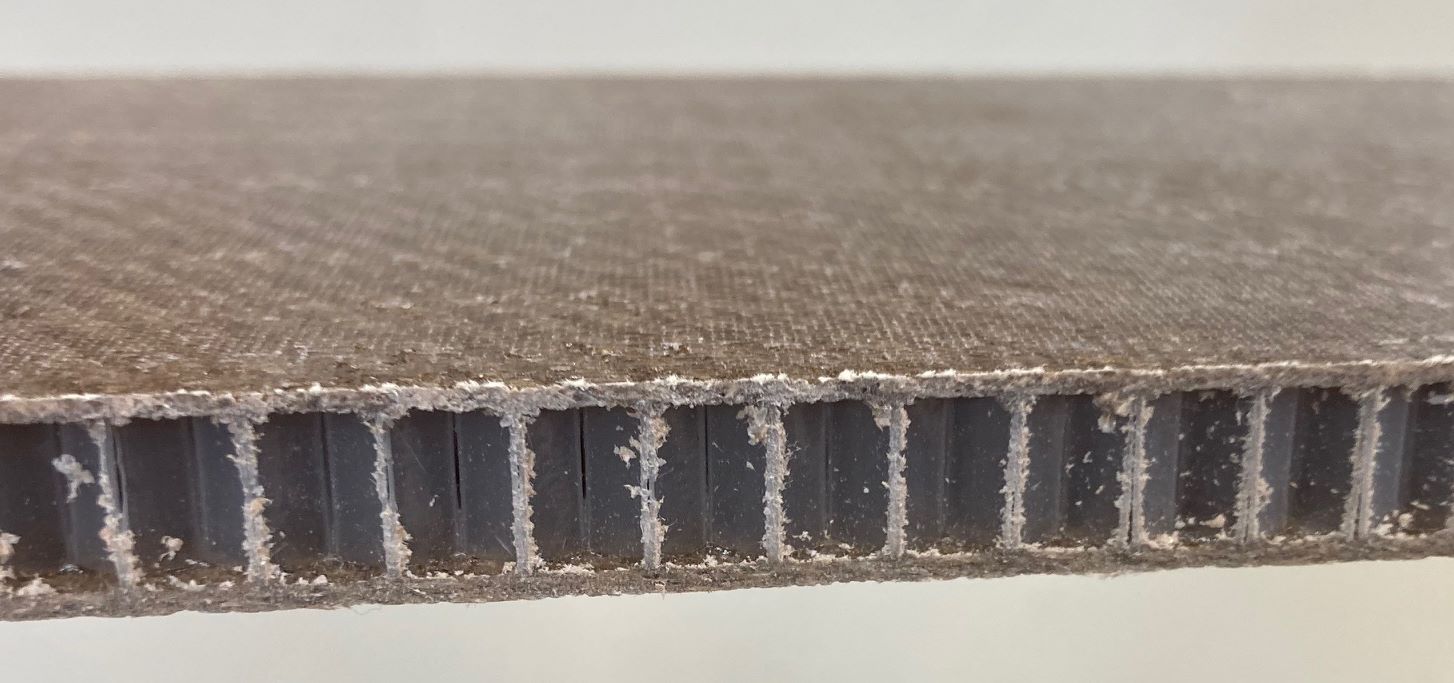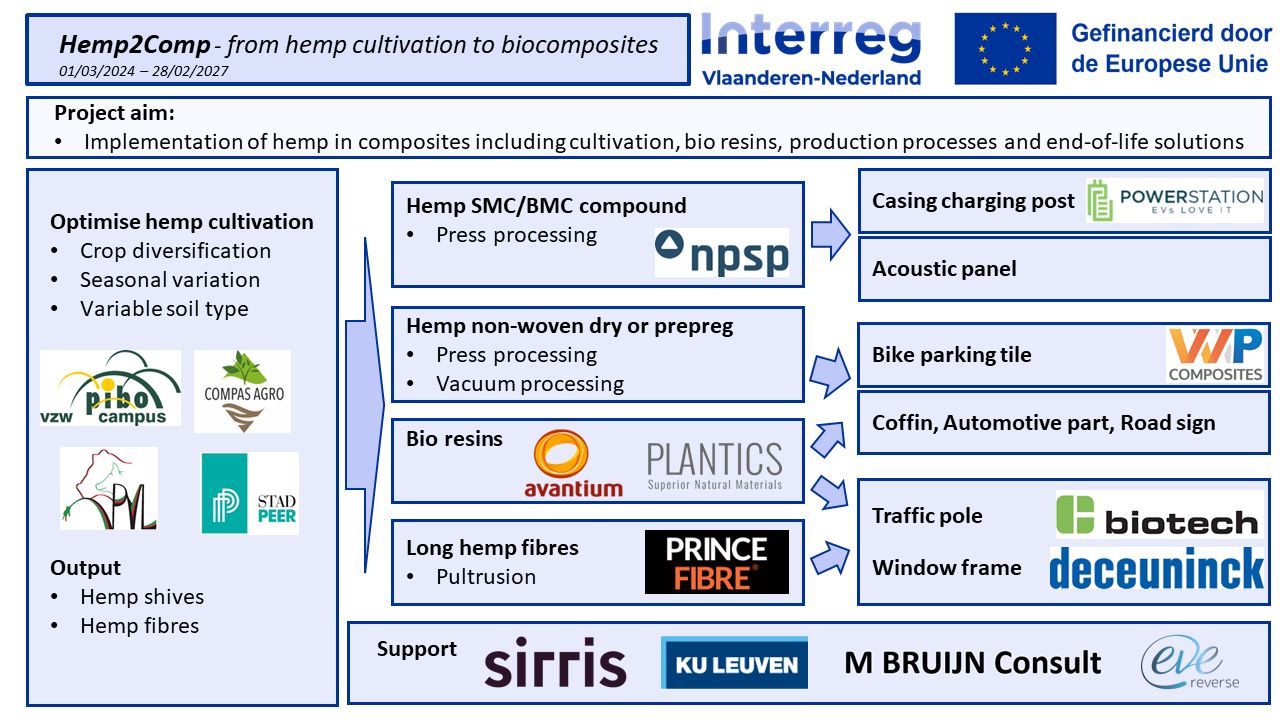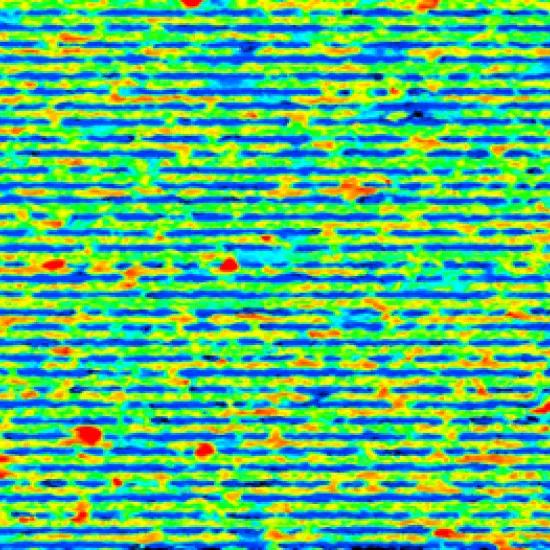A stool, step, case and tray show technical possibilities
At the end of 2023, the 3-year BREPLA project, with a focus on Biobased REinforced PLAstics, came to an end. During this project, Sirris worked together with project partner Centexbel – VKC to promote the implementation of biocomposites in industry. In addition to knowledge transfer on the different types of natural fibres and biopolymers, optimisation of bicomponent PLA filaments and research into suitable additives and biocoatings, the project partners also developed four products as end demonstrators: a stool, step, case and tray were made to show the technical possibilities of biocomposites to companies. Here we show the end results and explain how these demonstrators are produced.
The BREPLA project ran from 2021 to 2023, focusing on collective knowledge dissemination and implementation of bio-based fibre-reinforced plastics, namely biocomposites. The advantage of the "collective" focus is that the entire project has been carried out with a view to the current industrial context of a large group of companies. As a result, all presentations and reports from this project can be found on the project website.
An important task in the BREPLA project was the development of the product demonstrators. The aim of this development was to show the technical potential of biocomposites and to inspire companies to incorporate these materials into their own products. All demonstrators are produced in the Sirris labs.
Furniture demonstrator: stool and step
The BREPLA project partners have developed two products as furniture demonstrators: a stool and a step. Both products are made of the same materials and with the same production process, but have a different geometry.
The material structure was a sandwich structure with a thin flax-PLA/basalt-PLA layer at the top and bottom and a PLA honeycomb core in the middle (Figure 1). The sandwich structure makes it possible to obtain a light structure with a high bending stiffness.
For the 3D deformation of these panels, this project used an alternative, low-cost bending method. Figures 2 and 3 show the bending machine and the bending process. The bending machine provided local heating above the melting point of thermoplastic biopolymer PLA over the full width of the panel and with a length of about 4 cm. Once melted, the panel was folded to the desired angle using a bending mould. The fusibility of PLA was also used to bend the sheets together to seal off the core from the environment.
Result of the stool and step:
The stool was produced from both flax-PLA and basalt-PLA. The stool is 45 cm high and has a top surface of 30 x 30 cm. The pleated corners are slightly larger than 90° to make the stool stackable. The pleated corners have a low strength, so removable intermediate panels have been added to prevent the stool from unfolding. Figure 4 shows the result for the flax-PLA stool.
The purpose of the step was to create an aesthetically pleasing product that is pleated from a single panel and consists of sharp corners to push the limits of the bending process. The project succeeded in bending sharp angles of about 30° with good quality. Because of the use of a thermoplastic polymer, the ends of the panels are welded to the top by means of local remelting and pressure.
Case demonstrator
The case demonstrator developed in the project consists of two halves, a top and bottom, which are made of two material variants: one half of flax-PLA (100% bio-based) and the other half of hemp-PP. A non-woven fibre structure is used, in which the plant fibres and the polymer fibres are brought together at the same time in a random orientation to form a mat as a starting material (Figure 6).
Due to a limited press size, a box was pressed as a first step. A combination of lightweight, strength and rigidity was the requirement for the box. As a result, a two-step process was used, in which in the first step the mat is pressed under high pressure and temperature into a plate, from which all air inclusions are pressed. During the second step, the plate is clamped in a clamping frame, reheated above the melting temperature by an infrared installation and deformed by closing a double mould under high pressure in a hydraulic press. Figure 7 shows the set-up with the infrared installation at the back and the mould in the press at the front.
Result of the case:
The result after the pressing process is a box of 45 x 40 cm, with a depth of 15 cm. This box was then made into a case by welding two edges together and making a hinge connection that hinges the top and bottom. Figure 8 shows on the left, the result of the box after the pressing process and on the right, the case made of four box parts.
Tray demonstrator
The tray demonstrator in the BREPLA project is made of flax fibre (bio)epoxy composite. Initially, the approach in the project was to make a tray with a hole structure. The result of a material optimisation was that a knitted net was most suitable for producing the hole structure. After a production optimisation, a hand lay-up technique, in which a roller applies the epoxy resin to the flax net and cures the whole between a double mould, gave a good result in terms of mechanical and aesthetic properties.
Figure 9 shows how the tray with a hole structure was produced in this project. The result can be seen in Figure 10. This tray was a good result as a demonstrator, but its bending stiffness was too low and it had too many sharp edges to be able to speak of a usable tray as a product. As a result, a second type of tray has been produced that does not have these disadvantages.
In order to obtain a tray with a high bending stiffness and without sharp edges, the hole pattern was abandoned and a flax fabric was added to the flax net. The application of a vacuum infusion method resulted in the production of a high-quality tray that excels aesthetically, mechanically and in terms of finish. Figure 11 shows the combination of the flax fabric and flax net as a starting material without resin.
An image of the vacuum infusion production and the end result of the tray without a hole pattern can be seen in Figure 12. Due to the compression under the vacuum pressure, the fibre volume fraction in this second type of tray is higher than the tray produced by hand lay-up technique. This results in a similar weight, despite the addition of extra fibre. In this project, both high-quality trays were produced with bio-epoxy (max. 40% bio) and fossil-based epoxy. Only the fossil-based epoxy has a certificate of nutritional suitability.
Other results in the BREPLA project
In addition to the development of the demonstrators, work has also been done on the following specific topics:
- UV additives for bio-epoxies
- Flame retardants for bio-epoxies
- Bio-coatings for flax-epoxy and flax-PLA composites
- List of bio-epoxy types and properties
- Hydrolysis stabilizers for PLA
- Surface repair for thermoplastic (bio)composites
- Mirror welding and induction welding tests for thermoplastic composites
- Properties and production of self-reinforced PLA
- Deformation limit test for the optimisation of a press moulding process
- Cost estimation
- Recycling tests with the demonstrators
Are you interested in learning more about these topics and other results of the BREPLA project?
Consult our presentations & reports
|
Do you have any questions or would you like to exchange ideas? Feel free to contact Sirris or Centexbel – VKC:
- Wannes Lembrechts and Linde De Vriese, Sirris
- Frederik Goethals and Elke Demeyer, Centexbel - VKC
What happens after the BREPLA project?
The BREPLA project ended at the end of 2023. In the meantime, Sirris has started the Interreg Flanders-Netherlands project 'Hemp2Comp', together with new project partners. The aim of this project is to investigate the possibilities of hemp fibres in composites, starting from the cultivation of our own hemp fibres to the finished products and to investigate the optimal end-of-life scenarios for these products and materials. Are you interested in following up on this project? Then you can join the sounding board group, that meets twice a year, for free. Contact Wannes Lembrechts for more information.


















